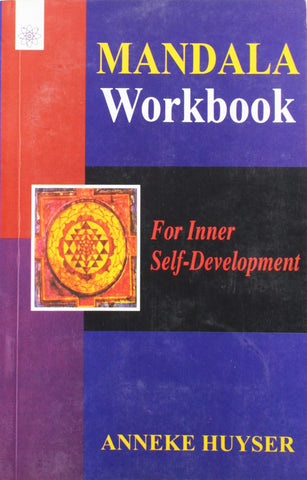Your cart is empty now.
The Burma Pitaka Association was founded on 20th August,1980, by U Nu, former Prime Minister of Burma, with the concurrence of the Government of the Socialist Republic of the Union of Burma headed by the then President, U Ne Win. The primary aim of the Association is to promote through translations in English an understanding of the Pitaka texts as interpreted and accepted in Theravada Buddhism. After this translation of the original sources is completed, it is intended further to translate the Commentaries and the Sub-Commentaries of the Theravada school of Buddhism, as well as explications and expositions by eminent scholar-monks of Burma.
The Burma Pitaka Association now has twenty-nine members, thirteen from Rangoon and sixteen from the districts. To supervise the work being done under its sponsorship, the Association holds two (sometimes three) meetings a month, but members from the districts attend only quarterly meetings to hear reports and to decide on policy matters. They may also attend other meetings of the Association if they happen to be in Rangoon.
As is generally known, the Pitaka texts are in the Pali language. These texts are divided into three Divisions which are known as the Three Pitakas. (Pitaka literally means ‘basket’.) Thus they are called Tipitaka in Pãli, (ti meaning ‘three’). The three Pitakas are the Vinaya (containing the Rules of Discipline for the Order of monks), the Suttanta (consisting of Suttas or Discourses), and the Abhidhamma (which deals with more profound philosophical and psychological aspects of Buddhism). The overall term for all the texts in these three Pitakas is just Pitaka.
According to this Pitaka classification the Suttanta Pitaka consists of five Nikãyas or Collections. These five Nikayas are: Digha NikAya or Collection of long discourses of the Buddha; Majjhima NikAya or Collection of middle-length discourses; Samyutta Nikäya or Collection of groups of connected discourses; Añguttara Nikaya or Collection of numerically graduated discourses; and lastly. Khuddaka Nikaya or Collection of miscellaneous works or books, an omnibus Collection which contains compilations of Suttas (ie. Discourses and Narrative Accounts).
The Digha Nikaya or Collection of the long discourses of the Buddha has three compilations, which we can call books, known as the Silakkhandha Vagga or Division of discourses on morality (containing thirteen sutas or discourses), the Maha Vagga or Large Division (containing ten suttas) and the Pãthika Vagga or the Pathika Division (containing eleven suttas). This last Division takes its name from the first sutta in this Division.
The Majjhima Nikáya also has three compilations, each containing a fair number of suttas. The Samyutta Nikaya is divided into five compilations, each called a Division (Vagga), and each has a large number of short suttas. The Anguttara Nikaya, Collection of numerically graduated discourses, has eleven parts or books, ranging from the first part consisting of discourses dealing with just one point or subject-matter, to the eleventh containing discourses each enumerating eleven things or points The Khuddaka Nikãya contains eighteen books of miscellaneous suttas, as accepted by the Sixth international Buddhist Synod of 1954-56.
When the Pali Texts as a whole are divided into Nikãyas, the five books of Vinaya and the seven books of Abhidhamma are included in the Khuddaka Nikaya Thus there are fifty-two Pali works or books which are collectively termed the Pitaka. Of these, all but seven have been officially translated into Burmese.
After the Burma Pitaka Association was founded, there was an intensive search in Burma for qualified translators into English. The whole of the year 1981 was taken up with this task and with the assigning of particular books to these translators who were accepted after some testing. Translation manuscripts started coming in towards the and of 1981, and continued coming in through the year 1982. Not all translators completed their assignments, and a fair number of the completed assignments were found to be unsatisfactory on subsequent examination. However, twenty translators completed the translation of thirty-two books. Eleven more books are works-in-progress. The remaining nine books have not yet been assigned for translation.
From the beginning the translations were regarded as raw material which would need to be processed considerably. An editorial board was formed early. One method after another of editing the translation manuscripts was tried. Towards the end of 1982, a new editorial committee was formed with U Shwe Mra as Chairman.
Three staff-members were assigned to the editorial committee to assist in the work of editing, and another staff-member was assigned the task of card-indexing translated terms. Sayadaw U Kumara of Bhamo Monastery, Mandalay, a member of the Samgha Advisory Board of the Association, acted as Adviser throughout the editing period of these ten suttas, and the final drafts were submitted to this learned Sayadaw for scrutiny.
A very important member of the editorial committee was the Consultant on doctrinal points of the Dhamma, Sayagyi U Kyaw Htut, a very learned scholar who early in life passed the highest examinations in the Dhamma and had earned the title Dhammacariya (Teacher of Dhamma). In editing a translation manuscript it was collated with the Pali text officially approved by the Sixth International Buddhist Synod held in Rangoon (1954-56). The Burmese Version of the text was also used as an aid. When difficult points on the Dhamma arose in the course of editing, or when doubtful renderings of a word, or a sentence, or a passage were in question, the relevant Atthakatha (the Commentary) and the Tikä (the Sub-Commentary) were constantly referred to, and the Dhamma Consultant had a busy time explaining points of significance to the other members of the editorial committee. Sometimes when such difficult points could not be resolved by the committee, or when there was disagreement amongst the members on a particular point, the matter was put up for decision to one of the eminently learned chief monks on the Samgha Advisory Board of the Association.
From the time the translation work started, early in 1981, four learned Dhamma Consultants were always on hand at the headquarters of the Association, and were available for consultation by the translators who were strongly exhorted to seek their guidance on doctrinal matters, to ask them for elucidation of perplexing words, phrases or passages, to obtain from them explanation of difficult Dhamma concepts, and to approach them for amplification upon points which needed to be explicated according to the Commentaries. Nevertheless, much editing work remained to be done on the translation manuscripts.
When the editorial committee was formed towards the end of 1982, it was decided to take ten suttas from the three books of the Digha Nikäya, (comprising three from the first book, three from the second book and four from the third book), and to edit their translations first so as to be able to publish these ten sutta-translations in collected form by the middle of 1983. Although the first editing process was finished by the middle of 1983, it was felt necessary to revise and review those edited versions again and again. Even after that, it was found that many of the sentences and passages in the translation text needed to be expanded and elucidated according to the Commentary, if they were to be understood fully. Therefore, it is only now (November, 1983) that we have completed the work of editing the ten sutta-translations to be published in this collection.
The above editorial procedure has been described rather fully, because a new editorial and translation scheme is to be introduced in order to speed up the editing process and publication.
We should now like to describe our approach to the editing process. Our aim generally has been to produce a translation which is not too literal but which is as close as possible to the original Pali text. We have done our best to realize this aim.
Since, however, we are fully conscious of the fact that the reader we have in mind is a person who knows English fairly well, and who is interested in finding out from the primary sources what Buddhism says, but who is not familiar with Buddhist concepts or with the way these concepts are expressed, we have endeavoured, to help him, This means that sometimes an approximation in English to the Pali expression, amounting to a paraphrase, has had to be preferred to a strictly exact rendering. It also means that sometimes explicatory material from the Commentary has to be incorporated in the translation text itself, since if that is not done what is read by the kind of reader we have in mind would be mere words, without conveying the cense intended. This will be seen especially in the translation of the Mahasatipatthãna Sutta.
We find that in several places of the translations the reader we have in mind will be unable to understand correctly and completely what is intended to be conveyed, unless he is helped. Footnotes and appendices do not seem to be sufficient to meet the case. He will have no one to turn to for explanation, no readable annotations explaining the very points that puzzle him in the phraseology or the subject-matter of the passage before him.
The need is immediate for our reader who has a particular translation before him and who wants to understand what a certain phrase or a certain passage signifies. Therefore we have tried to help him in several places in the translations. In our anxiety to help such a reader, we have inserted in the body of the translation, either in a paragraph or between paragraphs, explanatory or amplificatory materia or synopses, in brackets.
We wish to assure the readers that in the coming publications, we will do our very best to give them better help, so that they will be in a good position to understand what they read.
As in the case of some people engaged in a similar task, but for a different religion, we have not felt obliged to make an effort to render the same’Pali word everywhere by the same English word. By exploiting a wide range of English words covering a similar area of meaning and association, we feel that the meaning of the sentence as a whole is conveyed more effectively. This sort of approach applies also to structure. For instance, we have felt free to use the Active Voice where the Pali text uses the Passive Voice, and vice versa. To try to follow closely the idiom of PAU in an English rendering is to make it, at the least, awkward reading. But we have tried to keep a little of the flavour of Pali, if not the flavour of words or tone, at least the flavour of mode. of thought or modes of exposition, the latter being due to the early tradition of oral transmission. Thus, the reader will find many repetitious phrases, paragraphs and passages. But where the Pali text has a letter-symbol indicating the omission of a repeated passage, we have used either the symbol (p), standing for the Pali word peyyala, or dots.
The reader may be puzzled by the numbering sequence of the paragraphs in some places. The actual numbering follows that of the Pall text as approved by the Sixth International Buddhist Synod held at Rangoon. This numbering is consecutive for all the suttas in a particular book. But for this first publication of translations by the Association, we have taken the first, the second and the ninth Sutlas from Book One of the Dlgha Nikaya. Thus there is a gap in paragraph numbers between the second and the following sutta. The first sutta from Mahavagga in this publication, the fourth one here, starts with paragraph No.95, because this actually is the second sutta in Book Two. When the three books of the Digha Nikaya are published in their entirety, the suttas in the present publication will come in their proper place and the numbering of the paragraphs will be consecutive in each book.
Wherever we have used Pali words, and this we have done fairly liberally, English renderings of these Pali words are provided the first few times. The use of Pali words, we hope, will help to obviate ambiguity for those who have some knowledge of Pall, and secondly, we again hope, will help the reader who is keenly interested in Buddhism to familiarise himself with significant terms, each of which carries a whole bundle of meaning in Buddhism.
We are glad to acknowledge our debt to both western and oriental writers on Buddhism from the Theravada point of view, and to previous translators of Pali texts, especially those from Sri Lanka, even though in many places we have diverged. Also, Pall-English dictionaries compiled by both western and oriental scholars have been of great help in our task.
We have tried to avoid using English words or terms which carry connotations or associations closely connected, especially in the mind of a western reader, with fundamental ideas or practices in another religion. Thus, we have avoided words such as ‘sin’, ‘salvation’, ‘deliverance’ and ‘Heaven’. In the Mahanidãna Sutta, the sutta which sets forth the Doctrine of Dependent Origination, Paticcasamuppada, we have deliberately avoided the term ‘becoming’ or ‘the process of becoming’ for bhava, in spite of a whole book justifying the term, which was published by an eminent western scholar in 1937, but which, in our opinion, is not in conformity with the ‘Theravada view. This term has been accepted and used even by later Theravada scholars and translators who have overlooked the implications of the term, and we can only think that this is due to etymological considerations which, we venture to say, are sometimes misleading.
We have had to weigh carefully the choice of English equivalents for certain Paji words. To give only one or two instances, the Pali word nibbida, which is on the surface very simple and is usually translated as ‘disgust’ or ‘weariness’, cannot be translated adequately by a single word; a phrase should really be used, but that is awkward sometimes since the smooth flow of the text is disturbed. Another word that has often been superficially translated because of etymological considerations is abhinna. Since it has more than one meaning, we have rendered it ‘Magga Insight’, following the Commentary, where the context calls for such a rendering.
We say in all humility and without false modesty that the translations as edited by us must necessarily be inadequate. Burma is a land of many eminent scholars of Buddhism, ranging from the very learned and revered Sayadaws (chief monks) to the Dhammacariyas (i.e., those who have been awarded the title of Teacher of the Dhamrna, both monks and laymen), and these eminent scholars have a profound understanding of the Dhamma and can interpret it effectively in Burmese. But with a very few exceptions, they are not able to translate the Pali texts into English as they do not have an adequate command of English for this task. Because of this situation, the members of this editorial committee have had to attempt an uphill task. We are conscious of our short-comings and our limitations. Our task has been made possible only because of the guidance we have had from our Dhamma Consultants and because of the support we have had from members of our Advisory Body of Revered Samghas.
We do not regard the translations we have edited and produced as the final word on the subject. We therefore sincerely invite scholars of the Dhamma from all over the world to assist us by sending in criticisms, comments and suggestions, so that later editors of these translations issued by us may be better and more correct.
| I | Brahmajäla Sutta | |
| 1 | Paribbãjaka Katha | 3 |
| 2 | Minor Morality | 6 |
| 3 | Middle Morality | 8 |
| 4 | Major Morality | 12 |
| 5 | Exposition on Wrong Views | 16 |
| 6 | Eighteen Wrong Views Relating to the Past | 16 |
| 7 | Four Categories of Eternity View | 18 |
| 8 | The First Category of Eternity View | 19 |
| 9 | The Second Category of Eternity View | 20 |
| 10 | The Third Categoty of Eternity View | 22 |
| 11 | The Fourth Category of Eternity View | 23 |
| 12 | Four Views of Eternity and Non eternity | 25 |
| 13 | The First Category of Ekacea Sassata Ditthi | 25 |
| 14 | The Second Category of Ekacea Sassata Ditthi | 27 |
| 15 | The Third Category of Ekacca Sassata Ditthi | 28 |
| 16 | The Fourth Category of Ekacca Sassata Ditthi | 30 |
| 17 | Four Views of the World being Finite or Infinite | 31 |
| 18 | The First Antänanta Ditthi | 32 |
| 19 | The Second Antänanta Ditthi | 32 |
| 20 | The Third Antãnanta Ditthi | 33 |
| 21 | The Fourth Antananta Ditthi. | 34 |
| 22 | Four Kinds of Indecisive Evasion | 35 |
| 23 | The First Amarävikkhepa Ditthi | 36 |
| 24 | The Second Amaravikkhepa Ditthi. | 37 |
| 25 | The Third Amaravikkhepa Ditthi ... | 38 |
| 26 | The Fourth Amarãvikkhepa Ditthi .. | 39 |
| 27 | Two Doctrines of Non-causality ... | 42 |
| 28 | The First Adhiccasamuppanna Vada . | 42 |
| 29 | The Second Adhiccasaniuppanna Vada | 43 |
| 30 | Forty-four Views Relating to the Future | 44 |
| 31 | Sixteen Kinds of Belief in the Existence of Sanna after Death | 45 |
| 32 | Eight Kinds of Belief in the Non-existence of Sanna after Death | 49 |
| 33 | Eight Kinds of Belief in the Existence of neither Sañna nor Non- Sanna after Death | 51 |
| 34 | Seven Kinds of Belief in Annihilation | 52 |
| 35 | Five Kinds of Belief in (Mundane) Nibbana as Realizable in this Very Life | 56 |
| 36 | Agitation Conditioned by Wrong Views and Craving | 59 |
| 37 | Contact as Cause | 62 |
| 38 | No Possibility of Feeling Without Contact | 64 |
| 39 | Of the Round of Suffering caused by Wrong Views | 67 |
| 40 | Discourse on the Cessation of the Round of Rebirths | 68 |
| 41 | Conclusion | 69 |
| II | Simañnaphala Sutta | |
| 1 | Of the King and His Ministers | 73 |
| 2 | Concerning Jivaka, adopted Son of a Prince | 75 |
| 3 | Questions on the Fruits of the Life of a Samana | 77 |
| 4 | The Creed of Purana Kassapa | 79 |
| 5 | The Creed of Makkhali Gosala | 81 |
| 6 | The Creed of Ajita Kesakambal | 82 |
| 7 | The Creed of Pakudha Kaccayana | 84 |
| 8 | The Creed of Nigatha Nataputta | 85 |
| 9 | The Creed of Sancaya Belatthaputta | 86 |
| 10 | First Advantage of a Samana’s Life Experienced Here and Now | 88 |
| 11 | Second Advantage of a Samana’s Life Experienced Here and Now | 91 |
| 12 | Higher and Better Advantage of a Samana’s Life | 92 |
| 13 | Minor Morality | 94 |
| 14 | Middle Morality | 96 |
| 15 | Major Morality | 99 |
| 16 | Guarding the Sense-Faculties | 103 |
| 17 | Mindfulness and Awareness | 103 |
| 18 | Contentment | 104 |
| 19 | Dissociation from the Five Hindrances. | 104 |
| 20 | The First Jhãna as an Advantage for a Samana | 107 |
| 21 | The Second Jhãna as an Advantage for a Samana | 107 |
| 22 | The Third Jhana as an Advantage for a Samana | 108 |
| 23 | The Fourth Jhana as an Advantage for a Samana | 109 |
| 24 (I) | Insight-Knowledge | 109 |
| II | Power of Creation by Mind | 110 |
| III | Psychic Powers | 111 |
| IV | Divine Power of Hearing | 113 |
| V | Knowledge of the Minds of Others | 113 |
| VI | Knowledge of Past Existences | 115 |
| Vii | Divine Power of Sight | 117 |
| VIII | Knowledge of Extinction of Moral Intoxicants | 118 |
| 25 | Ajatasattu Becomes a Lay-Disciple | 120 |
| IX | Potthapada Sutta | |
| 1 | Discourse on Pohapada, the Wandering Ascetic | 125 |
| 2 | Cessation of Sanna | 126 |
| 3 | Existence of Cause in the Arising and Cessation of Sanna | 127 |
| 4 | Whether Sanna is Atta or Not | 133 |
| 5 | About Citta, Son of an Elephant Trainer, and Pothapada | 137 |
| 6 | Dhammas Not Certain (to Lead to Nibbãna) | 139 |
| 7 | Dhammas Certain (to. Lead to Nibbana) | 139 |
| 8 | Arising of Three Forms of. Attabhava | 144 |
| 9 | Citta, Son of Elephant Trainer Requests Admission into the Order | 153 |
| II | Mahanidana Sutta | |
| 1 | Paticca-samuppãda | 157 |
| 2 | Definition of Atta | 172 |
| 3 | Non-Definition of Atta | 174 |
| 4 | Consideration of Atta | 175 |
| 5 | The Seven Areas of Consciousness | 179 |
| 6 | Eight Stages of Release | 182 |
| III | Mahãpariuibbana Sutta | |
| 1 | Seven Factors of Non-Decline of Kings and Princes | 188 |
| 2 | Seven Factors of Non-Decline of Bhikkkus | 191 |
| 3 | A Second Set of Seven Factors of Non-Decline | 193 |
| 4 | A Third Set of Seven Factors of Non-Decline | 194 |
| 5 | A Fourth Set of Seven Factors of Non-Decline | 195 |
| 6 | A Fifth Set of Seven Factors of Non-Decline | 196 |
| 7 | Six Factors of NonDeeljne of Bhikkhus | 198 |
| 8 | The Venerable Sariputta’s Brave Utterance | 200 |
| 9 | The Disadvantages to an Immoral Man | 203 |
| 10 | Advantages Accruing to a Man of Virtue | 205 |
| 11 | Founding of the (fortified) city of Pata1putta | 206 |
| 12 | The Four Noble Truth | 210 |
| 13 | Those who will reach the Higher Levels of Magga-ln3ight without the Possibility of Returning | 211 |
| 14 | Exposition of the ‘Mirror of Wiglom’ | 214 |
| 15 | Ambapaji, the Courtesan | 219 |
| 16 | Spending the Vassa at Veluva village | 222 |
| 17 | Spoken Signs and Intimations | 226 |
| 18 | Mãra’s Request | 228 |
| 19 | Renunciation of the Life-sustaining Mental Process | 232 |
| 20 | Causes of Earthquakes | 233 |
| 21 | Eight Categories of Assemblies | 235 |
| 22 | Eight Ways of Mastery | 236 |
| 23 | Eight Stages of Release | 239 |
| 24 | The Venerable Ananda’s Appeal | 244 |
| 25 | Thirty-seven Elements of the Perpetuation of the Teaching | 249 |
| 26 | Looking Back Like a Noble Tusker | 251 |
| 27 | Discourse on Four Great Authorities | 253 |
| 28 | Account Concerning Cunda the Goldsmith’s Son | 257 |
| 29 | Having Drinking Water Brought | 259 |
| 30 | Account Concerning Pukkusa the Malla Prince | 261 |
| 31 | The Twin Sal Trees | 268 |
| 32 | Upavaa the Bhikkhu Elder | 270 |
| 33 | Four Places Arousing Apprehensionof the Nature of Impermanence | 271 |
| 34 | The Venerable Ananda’s Question | 273 |
| 35 | Persons Worthy of a Stupa | 274 |
| 36 | The Venerable Ananda | 276 |
| 37 | Four Marvellous Qualities of Ananda | 277 |
| 38 | Former Grandeur of Kusinarã | 279 |
| 39 | Homage by the Malla Princes | 281 |
| 40 | Subhadda the Wandering Ascetic | 282 |
| 41 | Last Words of the Tathagata | 287 |
| 42 | The Buddha’s Parinibbana | 289 |
| 43 | Last Rites for the Remains of the Buddha. | 293 |
| 44 | The Venerable Mahakassapa | 296 |
| 45 | Distribution of the Relics | 299 |
| 46 | Raising the Relic Stupas in Reverence | 301 |
| IX | Mahisatipatthãna Sutta | |
| 1 | Summary (on the Four Methods of Steadfast Mindfulness) | 307 |
| 2(I) | Perception of the True Nature of the body (i) Section on Breathing | 308 |
| II | Section on Body Movements and Posture | 310 |
| III | Section on Clear Comprehension | 312 |
| IV | Section on Consideration of Repulsiveness | 312 |
| V | Section on Consideration of the Primary Elements | 313 |
| VI | Section on Nine Kinds of Corpses. | 315 |
| 3 | Perception of the True Nature of Sensation | 317 |
| 4 | Perception of the True Nature of Mind | 318 |
| 5 | Perception of the True Nature of Dhamma | 321 |
| I | Section on the Hindrances | 321 |
| II | Section on the Five Khandhas | 323 |
| III | Section on the Twelve Sense-Bases | 325 |
| IV | Section on Bojjhanga | 327 |
| V | Section on the Four Noble Truths | 331 |
| 6 | Exposition of the Noble Truth of Dukkha | 331 |
| 7 | Exposito of the Noble Truth of the Origin of Dukkha | 334 |
| 8 | Exposition of the Noble Truth of the Cessation of Dukkha | 337 |
| 9 | Exposition of the Noble Truth of the Path Leading to the Cessation of Dukkha | 340 |
| III | Cakkavatti Sutta | |
| 1 | Being One’s Own Firm Support1 Being One’s Own Refuge | 347 |
| 2 | Dalhanemi the Universal Monarch | 348 |
| 3 | The Noble Duties of a Universal Monarch | 350 |
| 4 | The Wheel Treasure Appears | 351 |
| 5 | The Second and Subsequent Universal Monarchs | 353 |
| 6 | Decline in Life Expectation and Deterioration in Physical Appearance | 355 |
| 7 | Life Span of Ten Years | 362 |
| 8 | Increase in Life Span and Improvement in Physical Appearance | 364 |
| 9 | The Universal Monarch Sankha | 365 |
| 10 | Appearq of Metteyya Buddha | 366 |
| 11 | Increase in Length of Life and Improvement in Physical Appearance of BhikkhUs | 369 |
| V | Sampasdaniya Sutta | |
| 1 | Brave Utterance of the Venerable Sãriputta | 373 |
| 2 | Exposition on the Faultless Dhammas | 376 |
| 3 | Exposition on Classification of the Ayatanas, the Sense- Bases | 376 |
| 4 | Exposition on the Modes of Taking Conception in a Mother’s Womb | 377 |
| 5 | Exposition on Modes of Reading Another Person’s Mind | 378 |
| 6 | Exposition on Attainment of Insight | 379 |
| 7 | Exposition on Classification of Individuals | 380 |
| 8 | Exposition on Striving for Development of Factors of Enlightenment | 381 |
| 9 | Exposition on practice of the paith | 382 |
| 10 | Exposition on Practice of the Path Exposition on Right Conduct in Speech | 382 |
| 11 | Exposition on Right Moral Conduct | 383 |
| 12 | Exposition on Modes of Instruction | 383 |
| 13 | Exposition on Emancipation-Knowledge Attainable by other Individuals | 384 |
| 14 | Exposition on Eternity view | 385 |
| 15 | Exposition on Knowledge of Past Existences | 388 |
| 16 | Exposition on Knowledge of the Passing away and Arising of Beings | 389 |
| 17 | Exposition on Supernormal Psychic Powers | 390 |
| 18 | Other Virtues of the Teacher | 392 |
| 19 | Answer to Different Questions | 392 |
| 20 | Marvellous arid Unprecedented Event | 394 |
| VI | Pasadika Sutta | |
| 1 | After Nigautha Nataputta’s Death | 399 |
| 2 | The Teaching of One who is not Perfectly Enlightened | 400 |
| 3 | The Teaching of One who is Perfectly Enlightened | 402 |
| 4 | The Teacher over whose Death the Disciples become anguished | 404 |
| 5 | The Teacher over whose Death the Disciples do not get anguished | 405 |
| 6 | Imperfections of a System of Teaching | 406 |
| 7 | The Dhamma which should be recited and imparted uniformly | 412 |
| 8 | On Handling Differences of Opinions | 413 |
| 9 | Sanctioning of (Four) Requisites | 415 |
| 10 | .Enjoyment of Pleasure | 416 |
| 11 | Benefits of Enjoyment of Pleasure | 418 |
| 12 | Evil Deeds not Committed by One Free of Moral Intoxicants | 419 |
| 13 | Dealing with Problems | 421 |
| 14 | What is not Explained | 422 |
| 15 | What is Explained | 424 |
| 16 | Wrong Views based on Speculations about the Past | 424 |
| 17 | Wrong Views based on Speculations about the Future | 427 |
| VIII | Siñgäla Sutta | |
| 1 | The Six Directions | 433 |
| 2 | The Four Acts of Defilement | 434 |
| 3 | Four Factors Instigating Evil Acts | 434 |
| 4 | Six Practices Causing Dissipation of Wealth | 435 |
| 5 | Six Ec11 Consequences of Indulgence in Intoxicants | 435 |
| 6 | Six Evil Consequences of Sauntering in Streets at Unseemly Hours | 436 |
| 7 | Six Evil Consequences of Frequenting Shows and Entertainments | 436 |
| 8 | Six Evil Consequences of Gambling | 436 |
| 9 | Six Evil Consequences of Associating with Bad Companions | 436 |
| 10 | Six Evil Consequences of Habitual Idleness | 437 |
| 11 | False Friend | 438 |
| 12 | True Friend | 440 |
| 13 | Covering the Six Direction | 441 |
Delivery and Shipping Policy
- INTERNATIONAL SHIPPING
- Rs.1000-1100/kg
- ESTD. Delivery Time: 2-3 weeks (depending on location)
- Bubble Wrapped with Extra Padding
- NATIONAL SHIPPING
- NCR: Rs. 30/half kg
- Standard: Rs. 80/half kg
- Express shipments also available on Request
- ESTD. Delivery Time: Ranging from 1-4 days up to 7 business days (Depending on your choice of Delivery)
- TRACKING
- All orders; national or international, will be provided with a Tracking ID to check the status of their respective orders
- Depending on the Shipping Service, Tracking ID may be used on their respective tracking portals
Frequently Asked Questions (FAQs)
Domestic Shipping: 3-4 Days (after shipping)
International Shipping: 1-2 weeks (based on your location)
You will receive an email once your order has been shipped or you can email us if you didn't receive tracking details (info@mlbd.co.in)
Every book that we sell is the latest edition except all the rare books
Yes, we do provide free shipping, only on domestic orders (within India) above Rs.1500



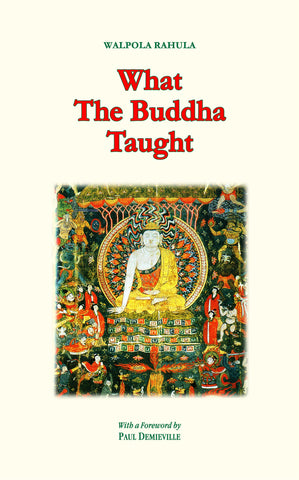
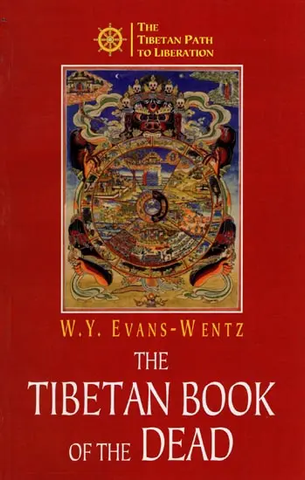
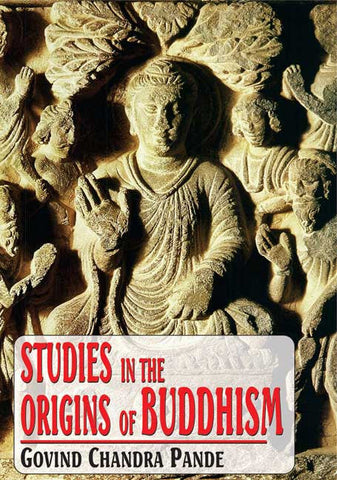
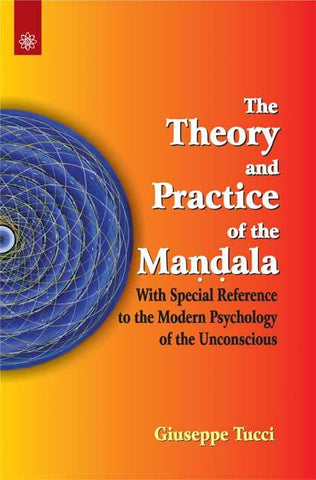
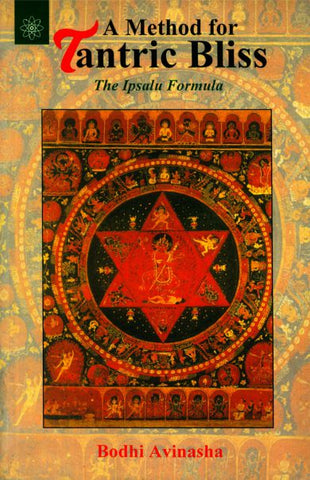
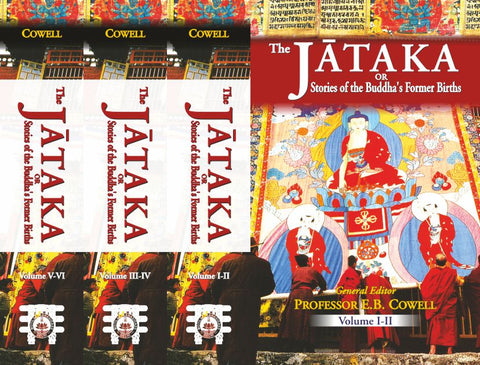
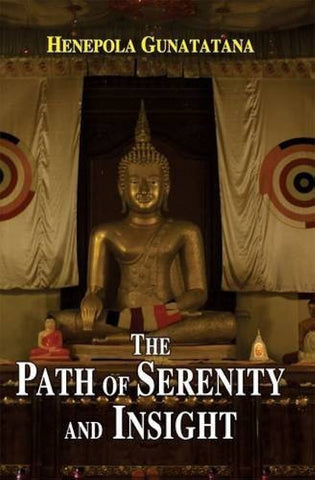
![The Rishukyo [Buddhica Britannica Vol.3]: The Sino-Japanese Tantric Prajnaparamita in 150 Verses (Amoghavajra's Version)](http://www.motilalbanarsidass.com/cdn/shop/products/RISHUKYO_large.jpg?v=1675417651)
